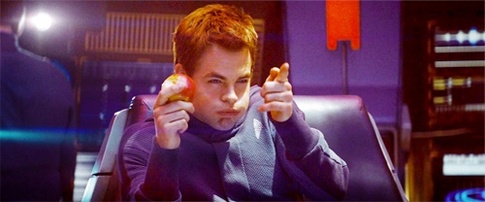***Disclaimer…. I’m a huge Star Trek fan. I’ve tried to simplify a little bit so you don’t have to know as much about Star Trek to understand what I’m trying to say.***
Kobayashi Maru is a star fleet training exercise that is used to evaluate a commander’s character and fortitude. The simulation in the Star Trek universe allows the cadet to command a federation star ship, and sends them to aid another Federation vessel, the Kobayashi Maru. The disabled ship is adrift in the Klingon neutral zone, and the ship commanded by the cadet entering the zone will be in violation of a treaty and liable to attack.
The cadet has to decide whether to rescue the stranded ship, creating an opportunity for an all-out war with the Klingons and jeopardizing his or her own vessel and crew-mates’ lives in the process, or leave the Kobayashi Maru to eventual destruction. If the cadet attempts to save the vessel, the simulation is programmed to guarantee that his or her own ship will be destroyed. Not only will he be unsuccessful in saving the Kobayashi Maru, but everyone else will die as well.
The object is to test the cadet’s character and presence of mind in the face of large-scale disaster and certain death. The creation of the Kobayashi Maru isn’t discussed as much in Star Trek cannon, although in the most recent reboot, it’s shown that Spock was the preliminary designer of the test. His Vulcan sense of logic proved to be very helpful in constructing the no win scenario.
When deciding on leaders, humans traditionally follow our gut and how we feel about a person. The mental models an heuristics used to make snap decisions on who to follow are legacy from our early days when we had to be very cautious about who we were hunting and gathering with. We decide leaders based on what they say but even more on how we perceive them. Don’t believe me? Take a read about JFK VS Nixon here.
While we can never get rid of the human perspective, shouldn’t we be responsible for aiding better decisions in who should be leaders? We should have our own Kobayashi Maru that we use to vet leaders where we can objectively see their character and fortitude. To be more specific, the president of the United States should be put through more than just public opinion to become president. We have the history of the world and technology to create all possible and future scenarios to test a candidate’s decision making skills. It’s not a heavy lift at all. Here are the steps:
- Recognize that we are currently incapable of making the best decisions without more information.
- Develop a Kobayashi Maru equivalent that runs through a week of various possible scenarios (domestic disasters, economic collapse, political brinkmanship,etc).
- Have the potential president pick their team.
- Run the simulations… Evaluate the results.
The hardest step is 1. Everything else is super doable. Our armed forces train just like this. I don’t think its too much to ask a potential Commander in Chief to go through similar training and evaluation.
There’s a lot of responsibility involved with picking the next leader of the free world . Citizens should look at a Kobayashi Maru like exam as an opportunity to improve our decision making by exposing the decision making process of our future leaders in life- like situations.
Or we can just watch them play The Sims.



